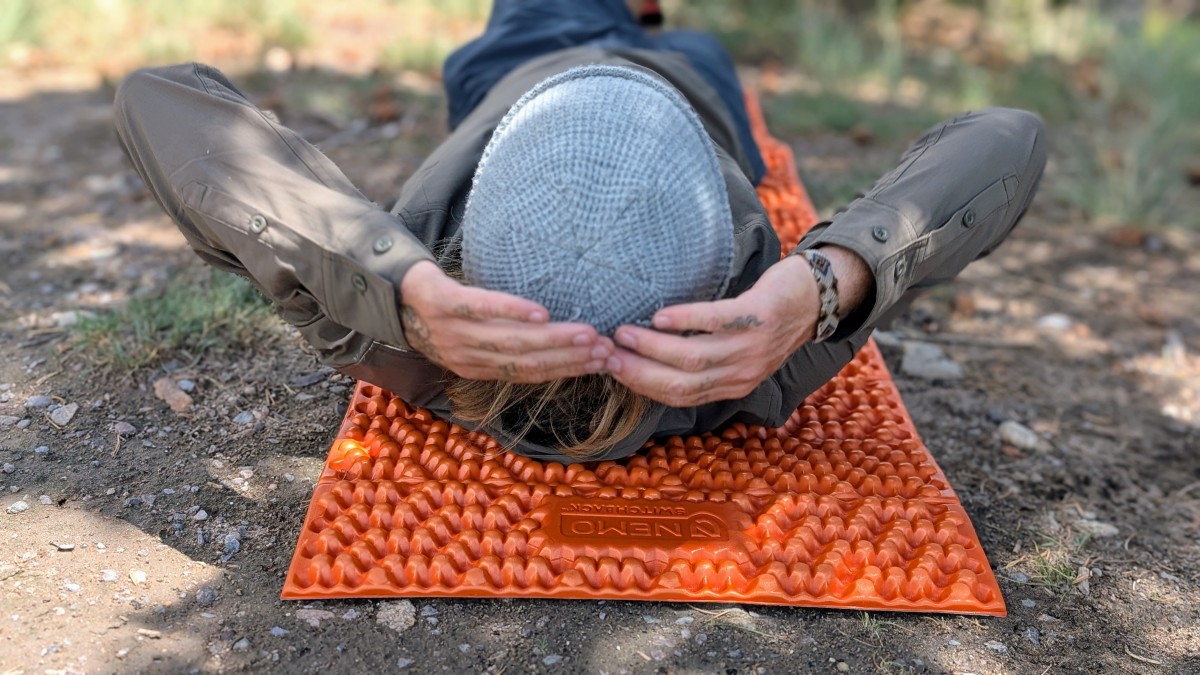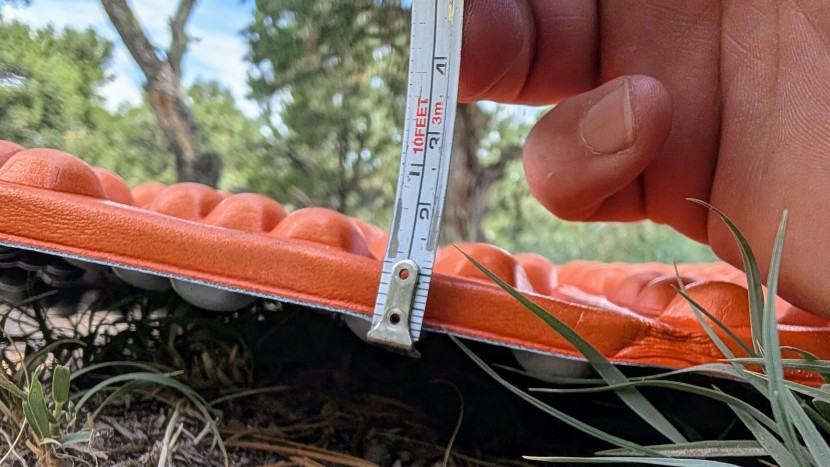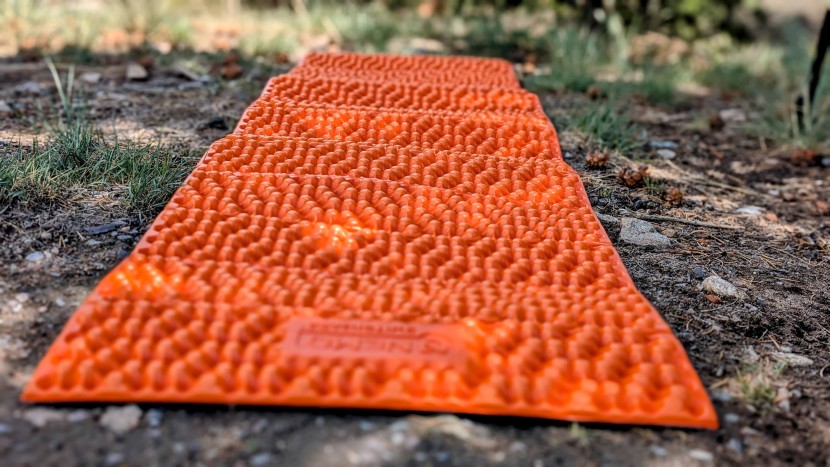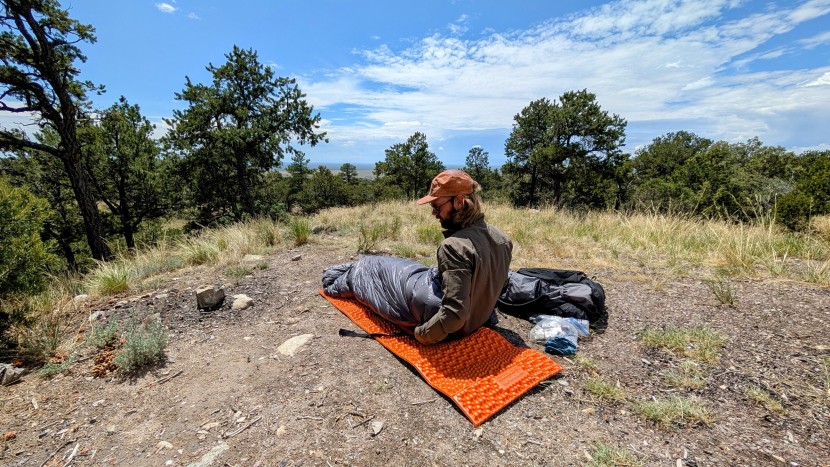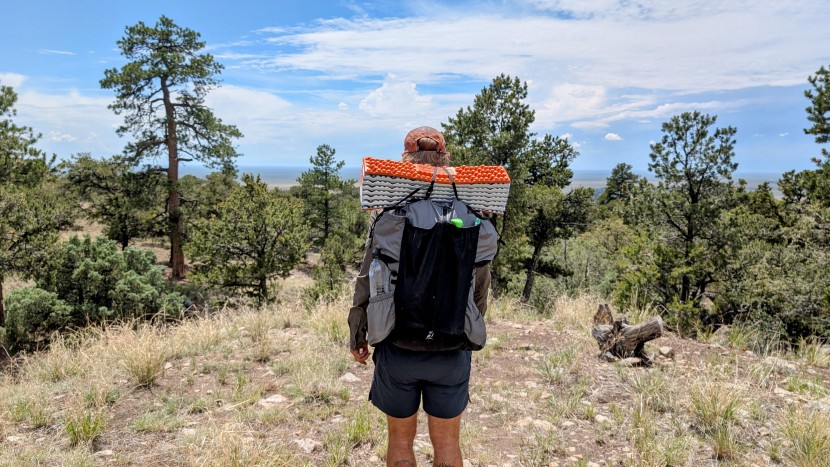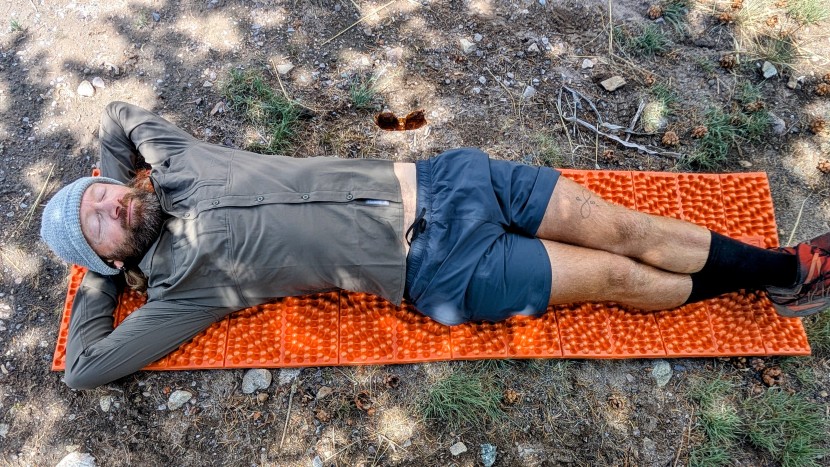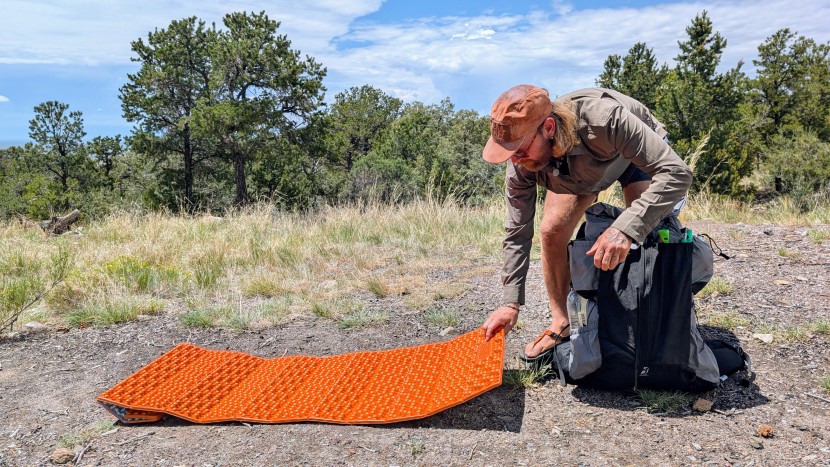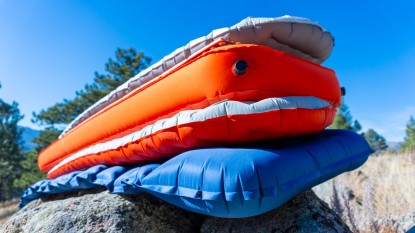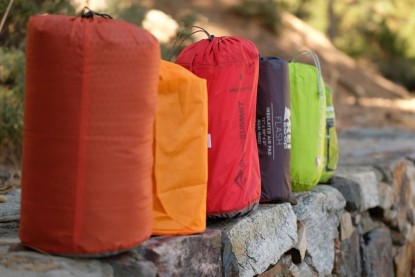NEMO Switchback Review

Our Verdict
Our Analysis and Test Results
Rugged functionality is the name of the game for closed-cell pads like the Switchback. Deployment and packing are a snap, and it's incredibly lightweight, though it does take up quite a bit of space. What sets the Switchback apart from other closed-cell pads is the extra thickness. By adding even a fraction of an inch, you get a classic pad that's a bit more comfortable – and arguably, a touch warmer – than other options.
Comfort
There are many benefits to a closed-cell foam pad, like price and durability. But when it comes to comfort, they're not even on the same planet as inflatable sleeping pads. We woke up often to shift and adjust our hips and shoulders, and it's practically impossible to sleep on your side on this thin sheet of foam. Sleeping on the Switchback is more comfortable than sleeping directly on the ground, but only slightly. If you're prone to restlessness because of pressure points, you'll have to find some uber-soft pine boughs to supplement this pad – or opt for an inflatable sleeping pad.
Now that we've established the context of comfort, let's talk about the details, because the Switchback is actually more comfortable than other foam pads we've tested. The egg carton-style dimples on this pad are noticeably taller and more spread out than competitor pads, and to great effect. Lying this pad out on a flat granite block accentuates its superior design, especially compared to flat, yoga pad-looking options. Unlike those flat pads, we could even comfortably prop ourselves up on our elbows on this pad, at least for a little while.
Weight
Weighing only 14.5 ounces on our scale, the Switchback is very light. It's not the lightest pad we tested, but it's close. For most of us, the tradeoff of some comfort for weight savings is more than enough. However, for the ultralight backpacker who wants to shave even more weight, you could easily cut off additional segments.
Each segment of the Switchback weighs about an ounce, and cutting it to torso-length would leave you with a pad weighing about seven ounces (depending on your height). Of course, cutting down this pad will make it even less comfortable. However, the uber-weight-conscious backpacker will have the lightest sleeping pad possible, all for a fraction of the price of an ultralight inflatable pad.
Warmth
The combination of closed-cell foam and a heat-reflective film on one side gives the Switchback a claimed R-value of two. If that doesn't sound like much compared to similarly weighted inflatable pads, that's because it isn't. (On average, the median R-value for pads we tested is 5.) However, it's enough insulation to keep you warm through the summer months.
We found summer camping to be quite comfortable with the Switchback, even on chilly nights at higher elevations. Without insulation, a thin, 30-degree down bag quickly lost heat to the ground. This pad proved to be a nice barrier of insulation – even if we weren't the most comfortable, at least we didn't freeze.
Packed Size
The Switchback isn't small, by any means, especially so if we continue to compare it against inflatable options. Attached to the outside of your pack, it can easily snag on branches if you're not careful. However, this highlights a significant drawback of all large, closed-cell pads, not just this one.
By utilizing the accordion design, you can fold the pad around the edges to get it to fit inside most backpacks. (Packs with a main compartment that's at least 20 inches tall.) And for ultralight backpackers, using a closed-cell pad inside your UL pack is an excellent way to add structure and padding.
Quality of Construction
The Switchback is, at its core, just a piece of textured, folding foam. It isn't higher quality than any of the other folding foam pads we tested, which are all well-made and durable. After about a month of using the Switchback, the egg carton ridges started to show a bit of collapse and degradation, but the wear and tear was minimal. A foam pad is vulnerable to rips and tears, especially if you strap it to the outside of your pack. However, even a torn version will work nearly as well, which is a nice insurance policy, especially on longer backpacking trips.
This type of pad doesn't require a pump sack to inflate, it won't pop, nor will it ever need a repair patch. Sometimes when the temperature drops, inflatable pads require some middle-of-the-night puffs to keep them fully inflated – you'll never have to worry about that with a foam pad like the Switchback. Another benefit is that you can throw this pad down anywhere. It sets up in seconds and is great for mid-day rests or to use as a seat around camp before bedtime.
Should You Buy The Nemo Switchback?
If you're looking to get into backpacking and need a pad that offers some warmth and a bit of padding, the Switchback will get the job done without breaking the bank. It also works well as an addition to an existing sleep system to add some insulation or extra protection for your inflatable pad. There are very comparable sleeping pads that offer nearly the same attributes for a few bucks cheaper, but the Switchback provides a bit more comfort and packs down smaller than most of the closed-cell foam options on the market.
What Other Sleeping Pads Should You Consider?
If you're here as an ultralight backpacker, it's worth comparing this pad against inflatable UL pads like the Nemo Tensor All-Season Ultralight Insulated and Therm-a-Rest NeoAir XLite NXT. If you're reading this review with a budget buy in mind, we suggest comparing the Switchback against the Klymit Static V2, our favorite wallet-friendly inflatable sleeping pad.


